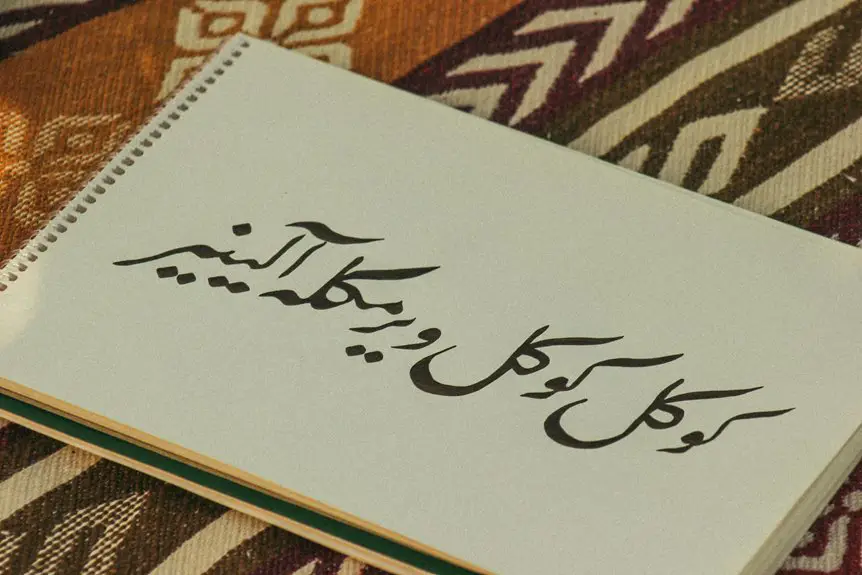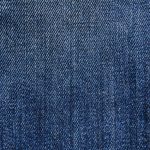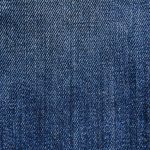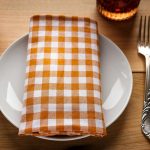Gingham fabric is a lightweight, durable cotton textile known for its crisp, checked pattern created by weaving dyed yarns in alternating colors. You’ll often see it in classic combos like white with red or blue, giving clothes and home decor a fresh, timeless charm. It’s breathable and easy to care for, making it perfect for warm-weather wear and cozy interiors. Keep exploring, and you’ll discover how gingham adds style and comfort in countless ways.
Table of Contents
Key Takeaways
- Gingham is a lightweight, durable cotton or blend fabric characterized by a distinctive checked pattern created through yarn-dyeing and plain weave.
- It originated in the 17th century as a striped fabric and evolved into the checked pattern popularized by English manufacturers.
- Classic gingham features two contrasting colors, commonly white paired with red, blue, or black, offering a timeless and versatile look.
- The fabric is breathable, easy to care for, and widely used in clothing, home décor, and accessories for warm-weather and casual styles.
- Gingham adds a timeless yet trendy aesthetic in fashion and interior design, complementing various palettes and enhancing visual interest.
History of Gingham Fabric
Although you might associate gingham fabric with classic summer dresses or picnic blankets, its history goes back much further.
You’ll find that gingham originated in the 17th century as a simple striped fabric imported into Europe from Southeast Asia. Over time, manufacturers in England began producing a checked pattern, which became the hallmark of gingham.
By the 18th century, gingham was widely used in clothing and household items because of its durability and ease of care. You can trace its popularity through the centuries as it evolved from practical everyday fabric to a fashionable choice, embraced by designers and cultures worldwide.
Understanding its rich background helps you appreciate gingham beyond its charming appearance.
Characteristics of Gingham Material
Gingham fabric stands out for its distinctive checked pattern, typically created by weaving dyed cotton or cotton-blend threads in a balanced, repeating design.
When you touch gingham, you’ll notice it’s lightweight yet durable, making it perfect for warm-weather clothing and casual wear. The fabric has a smooth texture with a slight crispness, thanks to its tight weave. You’ll appreciate its breathability, which keeps you comfortable all day long.
Lightweight, durable, breathable gingham offers smooth texture and crispness—ideal for warm-weather wear and casual comfort.
Gingham’s structure allows it to hold shapes well, so your garments won’t lose form easily. Plus, it’s easy to care for—you can machine wash and dry it without worry.
Whether you’re sewing, crafting, or just wearing it, gingham’s blend of practicality and classic appeal makes it a reliable choice.
Common Color Patterns in Gingham
You’ll find a variety of color patterns in gingham, but the classic combinations often feature two contrasting colors woven in a checkered design. The most iconic is white paired with red or blue, creating a fresh, timeless look.
You might also see black and white, which offers a bold, modern feel while staying true to gingham’s roots. Pastel shades like pink, mint, or lavender paired with white bring a softer, more delicate vibe.
Sometimes, you’ll spot multicolored gingham, where multiple hues intersect to create a lively pattern. Regardless of the colors, the alternating squares form a balanced grid, giving gingham its distinctive charm.
When choosing gingham, consider how the color pairing fits your style or project.
Popular Uses of Gingham Fabric
When you choose gingham fabric, you tap into a versatile material popular for everything from clothing to home décor.
Gingham fabric is a versatile choice, perfect for adding timeless style to both fashion and home décor.
You’ll find gingham in stylish shirts, dresses, and skirts, perfect for casual or semi-formal wear. It’s lightweight yet durable, making it ideal for summer outfits.
Beyond fashion, gingham works well in home décor—you might use it for curtains, tablecloths, or pillow covers to add a new, classic touch. Its timeless check pattern brings charm to kitchens and living spaces.
You can even find gingham in accessories like bags and hats, giving your look a playful edge.
Whether updating your wardrobe or revitalizing your home, gingham fabric offers a blend of style and practicality you’ll appreciate.
How Gingham Is Made
When you look at gingham fabric, it all starts with choosing the right yarn for durability and texture.
Then, the weaving pattern creates those classic checks by interlacing colored threads in a specific order.
Finally, dyeing methods bring out the vibrant colors that make gingham so recognizable.
Yarn Selection Process
Although selecting the right yarn may seem straightforward, it plays an important role in achieving the classic look and durability of gingham fabric. You’ll want to choose yarns that are strong yet soft, typically cotton or a cotton blend, to guarantee comfort and resilience.
Pay attention to the yarn’s thickness; a medium weight works best to create the crisp, clean checks gingham is known for. The yarn’s twist also matters—you want a balanced twist that holds dye well without compromising softness.
Colorfastness is vital since gingham’s charm lies in its vibrant checkered patterns. By carefully selecting your yarns with these factors in mind, you set the foundation for a gingham fabric that’s both visually appealing and long-lasting, ready for whatever project you have in store.
Weaving Pattern Techniques
Selecting the right yarn sets the stage for the weaving process that gives gingham its iconic checkered pattern.
When you weave gingham, you use a plain weave technique, which means the yarns interlace in a simple over-under sequence. This method creates a balanced, durable fabric with a smooth surface.
You arrange dyed yarns in both the warp (vertical) and weft (horizontal) directions, alternating colors to form the distinct checks. The intersections of the different colored yarns produce the gingham’s signature squares, combining solid and mixed hues.
Dyeing Methods Used
Because the vibrant colors define gingham’s charm, dyeing plays an essential role in its creation.
You’ll find that the yarns are usually dyed before weaving, a process called yarn-dyeing. This method guarantees the signature checkered pattern remains crisp and vibrant after weaving. The yarns are soaked in dye baths that penetrate fibers evenly, giving you consistent color throughout the fabric.
Sometimes, reactive dyes are used because they bond well with cotton, enhancing colorfastness and durability. After dyeing, the yarns go through rinsing and drying to set the colors.
You might also encounter piece-dyeing, but it’s less common since it doesn’t achieve the sharp checks that yarn-dyeing does. Understanding these dyeing methods helps you appreciate the quality behind gingham’s classic look.
Caring for Gingham Fabric
When you care for gingham fabric properly, you’ll keep its vibrant checkered pattern looking fresh and sharp.
Always wash gingham in cold water to prevent colors from bleeding or fading. Use a gentle cycle and mild detergent to protect the fabric’s fibers. Avoid bleach, as it can damage both the color and material.
Wash gingham in cold water on a gentle cycle with mild detergent; never use bleach to protect colors.
If you prefer hand washing, soak the fabric briefly and rinse well.
After washing, air-dry gingham by laying it flat or hanging it up, avoiding direct sunlight to prevent discoloration.
Iron gingham on a low to medium setting while it’s slightly damp to remove wrinkles without damaging the fabric.
Following these steps will maintain your gingham’s classic look and extend its lifespan.
Gingham in Modern Fashion and Design
You’ll find gingham making a strong comeback in today’s fashion, adding fresh patterns to classic styles.
It’s also popular in interior design, bringing a cozy yet modern touch to spaces.
Let’s explore how gingham fits into these contemporary trends.
Contemporary Style Trends
Although gingham has roots in traditional patterns, it’s become a fresh favorite in modern fashion and design. You’ll notice it popping up in bold, oversized prints on dresses, shirts, and skirts, giving a playful yet polished vibe.
Designers blend classic gingham with unexpected colors, from pastel blues to vibrant reds, making it versatile for casual or chic looks. You can easily pair gingham with denim or leather to create contrast and texture.
It’s also popular in mix-and-match prints, showing your adventurous side without overwhelming your outfit. Whether you’re dressing for brunch or a casual office day, gingham adds a timeless yet trendy touch that keeps your style current and eye-catching.
Don’t hesitate to experiment—it’s a pattern that’s here to stay.
Gingham in Interior Design
Gingham’s charm doesn’t stop at fashion—it brings a fresh, inviting energy to interior design as well. When you incorporate gingham patterns into your home, you create a cozy, timeless atmosphere that feels both classic and contemporary.
Use gingham on throw pillows, curtains, or even upholstery to add texture and visual interest without overwhelming your space. It works beautifully in kitchens, living rooms, or bedrooms, especially when paired with natural wood tones or neutral palettes.
You can mix gingham with florals or stripes to create a playful yet balanced look. Don’t hesitate to experiment with scale—large checks make bold statements, while smaller patterns offer subtle charm.
Frequently Asked Questions
Is Gingham Fabric Suitable for Upholstery?
You want durability, style, and comfort; gingham fabric offers charm and pattern but lacks heavy-duty strength. You shouldn’t use it for upholstery unless it’s reinforced or in low-traffic areas where wear won’t quickly show.
Can Gingham Fabric Be Used for Outdoor Clothing?
You can use gingham fabric for outdoor clothing, but keep in mind it’s usually lightweight and not water-resistant. For better durability and weather protection, consider blending it with synthetic fibers or treating it with a water-repellent finish.
Does Gingham Fabric Shrink After Washing?
Before smartphones, you’d want to know if gingham fabric shrinks after washing. It can, especially if it’s 100% cotton. To avoid surprises, wash it in cold water and air dry, keeping it looking sharp.
Is Gingham Fabric Hypoallergenic?
You’ll find that gingham fabric can be hypoallergenic, especially if it’s made from natural fibers like cotton. It’s breathable and gentle on skin, but always check the fabric blend to avoid any irritants or allergies.
How Does Gingham Fabric Compare to Plaid?
You’ll notice gingham has a simple, evenly spaced check pattern, while plaid features varied line widths and colors. Gingham feels lighter and more casual, making it perfect for summer, unlike the often heavier plaid fabric.
- A Buyer’s Guide to China’s Wholesale Fabric Markets Online - June 20, 2025
- Understanding Non-Woven Fabric Machines and Manufacturers in China - June 20, 2025
- The Top Fabric Fairs and Exhibitions in China to Attend This Year - June 20, 2025







